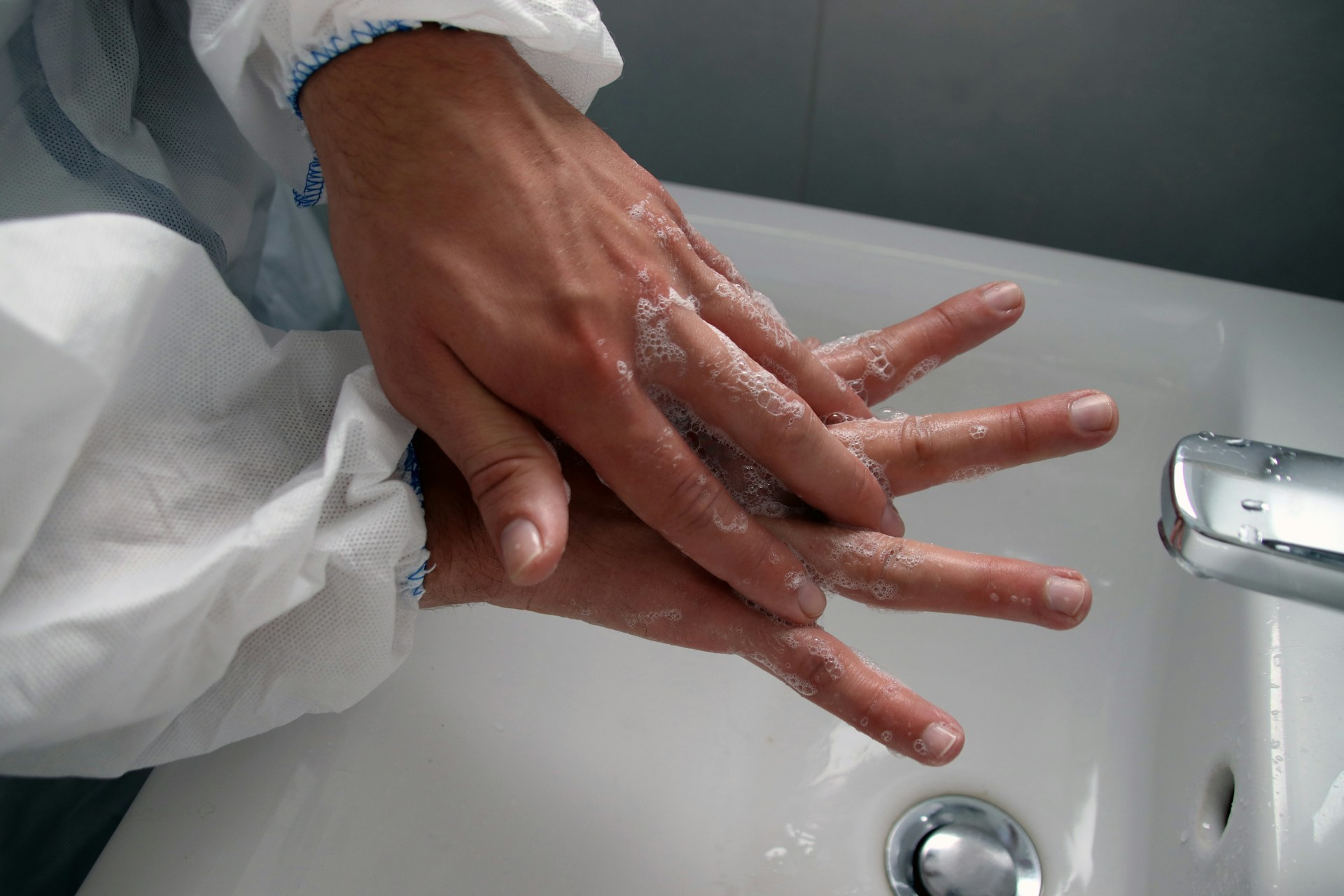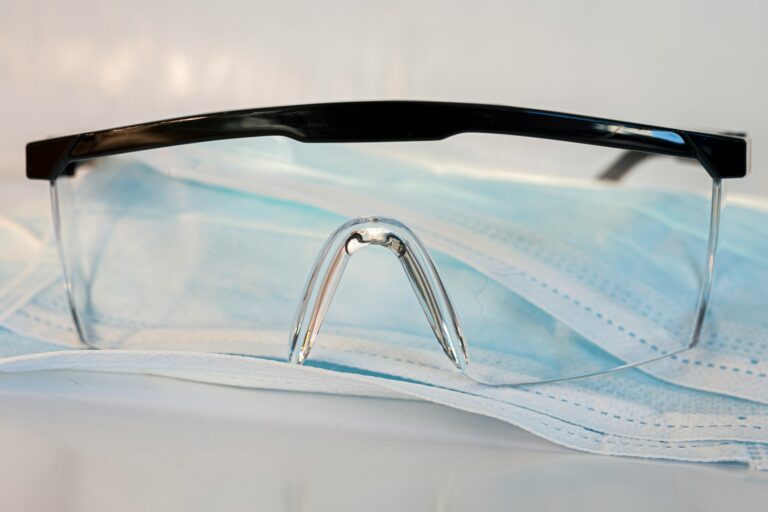Summary
- Hand Hygiene is Essential: Effective hand hygiene is really important in health and social care to prevent the spread of infections and protect patients and staff.
- When to Wash Hands: Hands should be washed before and after patient contact, before aseptic tasks, after exposure to body fluids, and after using the toilet.
- Handwashing Techniques: Proper handwashing involves using soap and water for at least 20 seconds, ensuring all areas of the hands are cleaned thoroughly. Alcohol-based hand rubs can be used when soap and water are not available.
- Training and Compliance: Regular training and audits are necessary to ensure staff understand and follow hand hygiene protocols, helping to create a safer environment for everyone.
Standard 15 is focused on Infection Prevention and Control, and within that, section 15.1b is about demonstrating effective hand hygiene.
The Importance of Hand Hygiene
Proper hand hygiene is really important in health and social care to stop infections from spreading. Hands are the main way germs move around, so keeping them clean helps protect patients, service users, and healthcare workers from getting sick.
When to Perform Hand Hygiene
Hand hygiene should be performed:
- Before and after any direct contact with a patient or service user.
- Before performing any aseptic task, such as administering medications.
- After exposure to body fluids or contaminated surfaces.
- After removing gloves.
- After using the toilet.
- Before and after eating.
Hand Hygiene Techniques
There are two primary methods of hand hygiene: handwashing with soap and water, and hand antisepsis using an alcohol-based hand rub (ABHR).
Handwashing with Soap and Water
Materials Needed:
- Soap (preferably liquid)
- Water
- Disposable paper towels or air dryer
- Wet hands: Wet your hands with clean, running water (warm or cold).
- Apply soap: Apply enough liquid soap to cover all hand surfaces.
- Lather and scrub: Rub hands together to create a lather and scrub them well. Be sure to scrub all surfaces, including the backs of your hands, between your fingers, and under your nails. A good handwash should last at least 20 seconds.
- Palm to palm rubbing
- Right palm over the left dorsum with interlaced fingers and vice versa
- Palm to palm with fingers interlaced
- Backs of fingers to opposing palms with fingers interlocked
- Rotational rubbing, left thumb clasped in right palm and vice versa
- Rotational rubbing, backward and forward with clasped fingers of right hand in left palm and vice versa
- Rinse hands: Rinse your hands well under clean, running water.
- Dry hands: Dry your hands using a clean disposable paper towel or air dry them.
- Turn off tap: Use the towel to turn off the tap (if not foot operated or sensor-based).
Hand Antisepsis with Alcohol-Based Hand Rub
Materials Needed:
- Alcohol-based hand rub (with at least 60% alcohol content)
Procedure:
- Apply product: Apply a palmful of alcohol-based hand rub to the palm of one hand.
- Rub hands together: Rub your hands together, covering all surfaces, until your hands are dry. This should take around 20-30 seconds.
- Palm to palm rubbing
- Right palm over the left dorsum with interlaced fingers and vice versa
- Palm to palm with fingers interlaced
- Backs of fingers to opposing palms with fingers interlocked
- Rotational rubbing, left thumb clasped in right palm and vice versa
- Rotational rubbing, backward and forward with clasped fingers of right hand in left palm and vice versa
Considerations
- Nail Care: Keep nails short and clean. Avoid artificial nails and excessive use of nail polish, as they can harbour bacteria.
- Skin Care: Maintaining good skin health is essential. Regularly, use hand moisturisers to prevent chapping and cracking.
- Jewellery: Remove all rings, bracelets, and watches before performing hand hygiene. Jewellery can harbour bacteria and make hand hygiene less effective.
Hand Hygiene Compliance
Compliance with hand hygiene protocols is essential. Regular audits and feedback can help improve adherence. Healthcare providers might use direct observation, self-reporting, or electronic monitoring to assess hand hygiene practices.
Training and Education
Ongoing training and education are really important to ensure that all healthcare and social care workers understand the importance and techniques of effective hand hygiene. This includes regular updates and refreshers to align with current guidelines and best practices.
Final Thoughts
Good hand hygiene is key to stopping the spread of infections in health and social care settings. By following proper techniques, workers can greatly lower the risk of passing on infections, making the environment safer for all.
Example Answers for Care Certificate Standard 15 – Activity 15.1b
Here are some example answers on how a care worker might demonstrate effective hand hygiene in various scenarios.
Example 1: Before Providing Personal Care
Scenario:
You are about to assist a resident with personal grooming tasks such as brushing their hair and teeth.
Answer:
“Before assisting Mr Smith with his grooming tasks, I perform proper hand hygiene by washing my hands thoroughly with soap and water. I ensure to scrub all parts of my hands, including between my fingers and under my nails, for at least 20 seconds. After rinsing my hands under running water, I dry them with a disposable paper towel, and use that towel to turn off the tap to avoid re-contaminating my hands. This ensures my hands are clean and reduces the risk of spreading infections.”
Example 2: After Exposure to Body Fluids
Scenario:
You have just finished changing the incontinence pad of a patient and need to clean your hands.
Answer:
“After changing Mrs Brown’s incontinence pad, I immediately remove my gloves and discard them in the appropriate waste bin. I then proceed to wash my hands with soap and water, ensuring I clean all areas of my hands thoroughly for at least 20 seconds. Following that, I rinse my hands and dry them with a paper towel, using the same towel to turn off the tap. If a handwashing facility isn’t immediately available, I would use an alcohol-based hand rub to sanitise my hands, ensuring I cover all surfaces and rub until completely dry.”
Example 3: Before an Aseptic Procedure
Scenario:
You are about to administer medication via an injection.
Answer:
“Prior to administering medication via injection to Mr Jones, I perform effective hand hygiene by using an alcohol-based hand rub. I dispense a suitable amount of the hand rub onto my palms and thoroughly rub my hands together, ensuring I cover all surfaces, including the backs of my hands, between my fingers, and under my nails. I continue rubbing my hands until they are completely dry. This step is important in maintaining asepsis and ensuring that Mr Jones remains protected from any potential contamination.”
Example 4: Before and After Eating
Scenario:
You are about to have your lunch break and need to ensure good hand hygiene practices.
Answer:
“Before I sit down to eat my lunch, I use the handwashing facility to clean my hands thoroughly with soap and water. I follow the standard handwashing protocol, ensuring all areas of my hands are lathered for at least 20 seconds. After rinsing, I dry my hands with a disposable paper towel. Using proper hand hygiene before eating helps prevent the ingestion of any contaminates that might cause illness. After finishing my meal, I perform hand hygiene again to ensure my hands are clean before returning to any tasks or contact with patients.”
Example 5: After Using the Toilet
Scenario:
You have just used the staff restroom and need to ensure your hands are clean before returning to patient care.
Answer:
“After using the staff restroom, I always make sure to wash my hands thoroughly. I wet my hands under clean, running water, apply enough liquid soap, and scrub all hand surfaces, including the backs of my hands, between my fingers, and under my nails for at least 20 seconds. After rinsing well, I dry my hands using a disposable paper towel, using the same towel to turn off the tap. This procedure maintains hygiene and prevents any potential spread of germs to patients and other staff members.”
Final Thoughts
By following these practical examples, care workers show they know when and how to keep their hands clean. This meets The Care Certificate Standard 15.1b and helps create a safer, cleaner place for patients and healthcare staff.
Subscribe to Newsletter
Get the latest news and updates from Care Learning and be first to know about our free courses when they launch.





